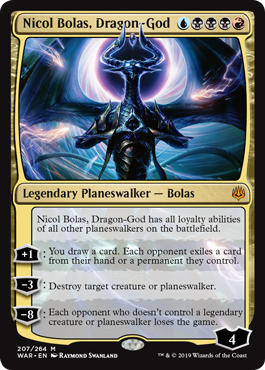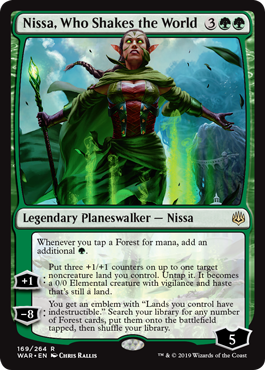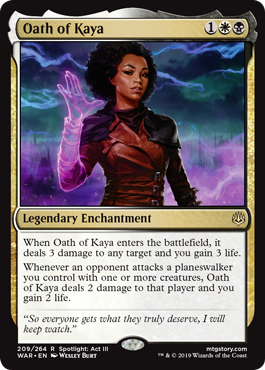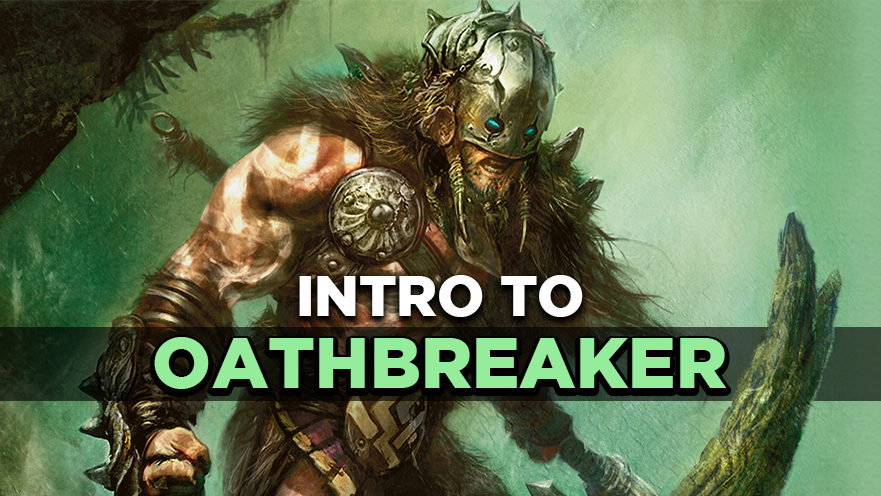“My Squirrels get +10/+10, trample, and haste.”
I said this to an opponent while playing one of many Oathbreaker games at MagicFest Seattle.
Before that weekend, I had never played this command-zone-oriented format. But by the time the Fest was over, I had played eight Oathbreaker matches and was completely sold on it.
Not sure what Oathbreaker is? Interested in shaking things up with your Commander playgroup or at your next MagicFest? How about picking up a format where any planeswalker is accepted in the command zone?
If you said, “Heck yes!” to any of these, read on!
What’s Oathbreaker?

I sat down at a free-to-play MagicFest table across from two opponents. I pulled out a spindown die, set my life total to twenty, and shuffled up a fifty-eight-card deck. Then, I put a sorcery and a planeswalker into the command zone, and I was ready to go.
As you can probably guess, this isn’t your normal Commander game setup. Oathbreaker’s smaller decks and life totals are reminiscent of Brawl, but the card pool is bigger and games typically go much faster. And, of course, there are those two cards that you wouldn’t normally find in the command zone.
So, what’s going on? Here are the basic rules of Oathbreaker*:
Oathbreaker
Unlike Commander and Brawl, your deck’s face character is always a planeswalker, which you’ll call your oathbreaker. Your chosen ’walker starts in the command zone each game and defines your deck’s color identity. Casting it from and returning it to the command zone works like in Commander and Brawl (i.e. you’ll pay two additional mana each time you cast it).
Signature Spell
Additionally, you get one instant or sorcery, called your “signature spell.”
Your signature spell must be within the color identity of your oathbreaker. For example, if your oathbreaker is white and blue, your signature spell can be a white, blue, white-blue, or colorless instant or sorcery.
Your signature spell lives in the command zone, along with your oathbreaker, and it returns to the command zone after you’ve cast it. However, you’ll pay two additional mana each time you cast your signature spell, and you can’t cast it unless your oathbreaker is on the battlefield.
Sixty-Card Singleton
Your oathbreaker and signature spell are two of the sixty cards in your deck. The other fifty-eight are up to you, as long as you follow the banned list and include no more than one copy of each card (except basic lands).
Twenty Life
Each player starts with twenty life instead of Commander’s forty or Brawl’s thirty (or twenty-five, for duels). That means that games typically go faster than Commander or Brawl games.
* Detailed format rules and ban list available at oathbreakermtg.org.
Deck Construction

You may already have a planeswalker in mind to helm your Oathbreaker deck. But if you’re unsure which planeswalker or spell to choose, here are a few lessons I learned from my games that you might find useful.
Flavor vs. Function
Oathbreaker’s metagame seems similar to Commander’s, perhaps with a greater percentage of “flavor” decks. Some players prefer to build themed decks, while others go for strategies like Voltron, tokens, or milling. About half the decks I played against at MagicFest Seattle seemed competitive, while the other half were focused on flavor and fun.
My suggestion: Start with whatever would make you happy. Then you can build your next deck after getting a feel for the format.
Low Oathbreaker CMC
If your deck’s strategy hinges on your signature spell, choose an oathbreaker with a low converted mana cost. That way, you can ensure you cast your signature spell early and often. Don’t let your oathbreaker’s high converted mana cost stand in the way of your own signature spell strategy.
Heavier Combat Focus
Your opponents will want to destroy your oathbreaker to prevent you from casting your signature spell, so you’ll want to protect your oathbreaker at all costs.
Some planeswalker cards naturally create tokens or disrupt opposing creatures as protection. Others don’t protect themselves at all. If your oathbreaker is one of the latter, I suggest playing plenty of creatures with low converted mana costs. These creatures won’t just protect your oathbreaker – they can attack your opponent’s oathbreaker, too!
Take the (Broken) Oath

If you’ve been on the fence about Oathbreaker, I encourage you to try it out! I was pleasantly surprised with how much fun I had playing the format.
If you’re going to MagicFest Las Vegas, know you’ll have at least one opponent there. Given the choice between Oathbreaker and Commander, I’m prioritizing Oathbreaker so I can explore this fresh, new format. If you’ll be there and want to battle, shoot me a tweet at @bradleyrose.
If you need some inspiration to get you started, check out my Squirrels deck list!

Bradley is a co-host of a weekly Magic: The Gathering design podcast, Beacon of Creation. He was among the Top 101 contestants in Wizards of the Coast’s Great Designer Search 2. He enjoys crafting custom Magic product experiences, like Archfrenemies, and building Commander decks with creative constraints.

